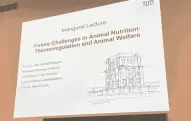Pathogens, the invisible historians
Before Covid-19, it was the world's deadliest disease. In 2018, the World Health Organization estimated ten million people actively infected and nearly 1.5 million deaths. Many millions of people continue to be infected with it every year. Between a third and a quarter of humanity carries the pathogen - usually without symptoms and without being infectious. About ten percent of those infected fall ill. This makes it one of the most dangerous infections. Tuberculosis.
Similar to bubonic plague, one of its rivals among the deadliest epidemics, it is triggered by a bacterium (instead of a virus, as in covid, smallpox or measles). But Mycobacterium tuberculosis, like Sars-CoV-2, also jumps from person to person via droplet infection and usually affects the lungs.
Tuberculosis has probably killed more people than any other epidemic. Plague, Spanish flu, Covid-19 and many others together brought death to many millions of people. But tuberculosis is not only often fatal, it is also very old. Its history of infection, as has now been demonstrated, goes back many thousands of years to the beginning of sedentary life. More than a billion people have probably succumbed to it.
Why and when "Tb" became so deadly was long a mystery. According to a study now published in the scientific journal "The American Journal of Human Genetics," its roots go back at least 10,000 years, when humans began farming and raising livestock. However, its pandemic effect is likely to have developed only about 2000 to 3000 years ago, when more and more people lived ever closer together. Almost only those with an effective immune response survived it from then on.
Like many deadly infections, tuberculosis is a zoonosis. It therefore once jumped from animals to humans, mutated and was then also passed on from person to person. In its current genetic state, Mycobacterium has been on the loose for about 2000 years. At that time, humans began to settle more densely in cities. Since the Bronze Age, it has changed the human immune response in the process, first in Europe and Africa, then on other continents. "We are all the descendants of those people who survived the past pandemics of this disease as well," said Lluis Quintana-Murci of the Institut Pasteur and Collège de France in Paris. Together with his colleague Gaspard Kerner, he has followed the trail of single mutations of Mycobacterium tuberculosis in the genome of more than a thousand Europeans from past millennia.
One gene variant is decisive
Variants of the immune gene TKY2 play a key role. The researchers found a rare mutation here called P1104A in a farmer who lived in Anatolia around 8500 years ago. Presumably, with the spread of agriculture and animal husbandry, it also made its way to Europe. The genetic changes over long periods of time allow the researchers to estimate how common individual mutations once were. In this way, Kerner and Quintana-Murci determined that the P1104A variant was probably present in about three percent of the population until about 5,000 years ago. Then in the Middle Bronze Age, about 3000 years ago, it was carried by ten percent of all Europeans. But then their share dropped to about 2.9 percent. That's the same figure for the continent's inhabitants today.
This drastic change coincides with the first appearance of the variant of tuberculosis that is prevalent today. Using computer simulations, the researchers were able to show plausibly how population density and migration might have influenced the frequency of individual gene variants. Accordingly, at least one-fifth of the population at that time would have become seriously ill or died if two copies of the original and now rare variant P1104A were present in their genome. Therefore, only a few people carried this variant at the end of the Bronze Age 2000 years ago. In the event of infection, its carriers simply had less chance of surviving and passing on their genes to their offspring. As a result, the proportion of the lethal variant - due to countless deaths - fell to a low level.
Across the sea and around the Cape
"Infectious diseases are the strongest evolutionary force we humans face," Lluis Quintana-Murci is therefore convinced. And molecular anthropologist Anne Stone of Arizona State University in Tempe simply states: Those who only had the older and now rare variant in their genetic makeup were poor - in other words, particularly at risk - as soon as Mycobacterium appeared.
Kirsten Bos of the Max Planck Institute for Evolutionary Anthropology in Leipzig had already shown in a 2014 study that it was not - as long assumed - European conquerors who brought tuberculosis to America. Rather, the study of bacterial genomes from bones in pre-Columbian tombs in Peru showed that the pathogen probably reached the New World more than a thousand years ago with eared seals from Africa across the Atlantic. In fact, seals and sea lions from the coast of South Africa and Namibia swim far out into the Atlantic on their forays and may have carried the pathogen to South America as well. It could have reached the West Coast via related species - and then into humans via killed specimens. Data suggest it first hit the Chiribaya culture between 900 and 1350 in southern what is now Peru. Tuberculosis bacteria then reached North America about 700 years ago.
Deadly update from Europe
Nevertheless, the conquistador theory is not entirely wrong. Because the findings indicate that the Europeans brought more aggressive variants with them. Only these then became - together with several other deadly diseases - the most cynically effective weapon during the brutal colonization. Millions of indigenous people fell ill and died.
What happens when a population that is "naive" about its immune defenses is confronted with a novel pathogen is also suggested by new studies on the measles virus. According to a genetic comparison, it is closely related to the pathogens that cause rinderpest, which has since been eradicated. In the past, it was believed that the measles virus occurs solely in humans, as was also assumed for the rubella virus until recently. In fact, however, both are also zoonoses, originating in livestock and domestic animals. The measles virus apparently first spread from cattle to humans about 2,500 years ago, also at a time when people in the eastern Mediterranean region were beginning to live ever more closely together with their livestock in urban civilizations, often under the same roof.
"Attic plague"
When the measles virus also succeeded in human-to-human transmission thanks to mutations and adapted to its new host, it may have triggered the first deadly pandemics. The "Attic Plague" described by the historian Thucydides may have been one such pandemic. It raged in Athens from 430 to 426 BC during the Peloponnesian War. A quarter of the population fell victim to it. It may have been humanity's first pandemic and, like its successors, probably influenced the course of history. Only later did measles lose at least some of its horror through further genetic changes. Today, they are one of the most common childhood diseases. However, during European expansion in the Americas, measles repeatedly and massively decimated the indigenous population there, as the natives lacked the immune response that had developed over two millennia in the Old World - but which had been bought by numerous deaths.
In the shadow of the covid pandemic, experts warn, other epidemics such as TB, HIV and malaria could again spread rapidly around the globe. Stefan Kaufmann of the Max Planck Institute for Infection Biology in Berlin, for example, fears more than 1.2 million additional infections and 300,000 deaths from the tuberculosis pathogen alone. During the restart after the lockdown, hundreds of thousands would probably be infected undetected, especially in the global South. And spread mutations that complicate antibiotic treatments. He recently wrote in this newspaper that it is therefore more important than ever to diagnose TB infections early and to invest in vaccine development.
Image by Gerd Altmann










































